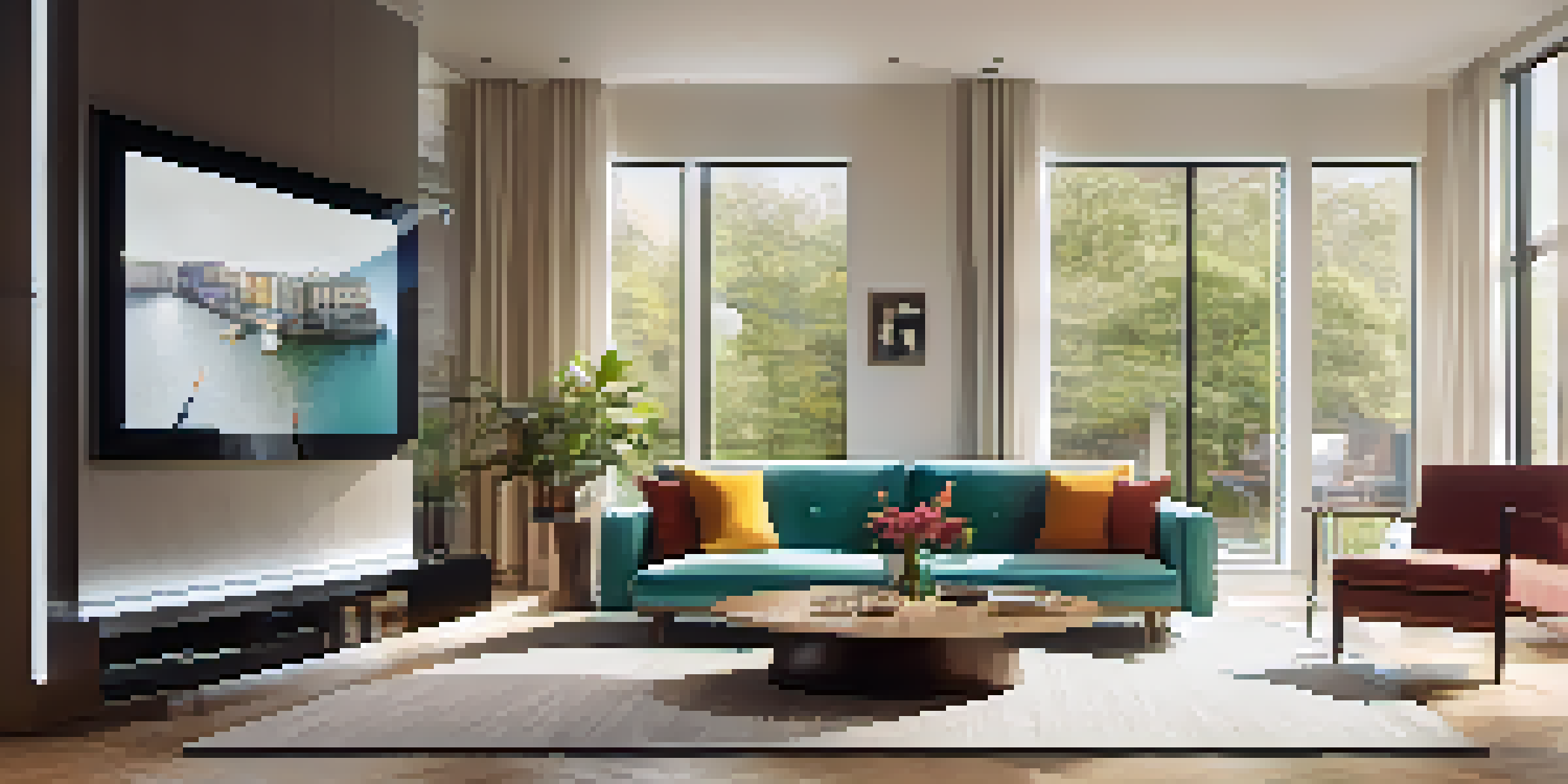Augmented Reality in Interior Design: Visualizing Spaces

Understanding Augmented Reality in Interior Design
Augmented Reality (AR) blends digital elements with the physical world, creating an interactive experience. In interior design, AR allows designers and clients to visualize spaces in real-time, making the design process more engaging. By overlaying digital models of furniture, colors, and layouts onto an existing space, users can see how changes will look before making any commitments.
The Benefits of Using AR in Interior Design
One of the most significant benefits of AR in interior design is enhanced visualization. Clients can walk through a digitally rendered version of their space, helping them make informed decisions. This technology also saves time and resources, as designers can quickly adjust layouts and styles based on client feedback without needing to create multiple physical prototypes.
AR Enhances Visualization in Design
Augmented Reality allows clients to visualize spaces in real-time, making design decisions more informed and engaging.
How AR Tools Work in Design Projects
AR tools often utilize a smartphone or tablet camera to capture the current layout of a room. Once the space is scanned, users can use AR apps to superimpose virtual furniture and decor. This process is akin to trying on clothes at home via a fitting room app; it gives clients a clearer vision of how items will fit into their lives.
Real-World Applications of AR in Interior Design
Many interior design firms now incorporate AR into their workflows. For example, a family looking to renovate their living room can visualize new furniture arrangements and color schemes using AR apps. This technology not only enhances the design experience but also helps in communicating ideas more effectively between designers and clients.
AR Tools Simplify Design Projects
By using AR tools, designers can quickly overlay virtual furniture and decor onto existing spaces, akin to trying on clothes at home.
Challenges of Implementing AR in Interior Design
Despite its advantages, implementing AR in interior design comes with challenges. For instance, the technology can be costly and may require specialized training for designers. Additionally, clients may need to invest in compatible devices, which can be a barrier to entry for some.
The Future of AR in Interior Design
As technology continues to advance, the future of AR in interior design looks promising. We can expect even more realistic simulations, with improvements in AR graphics and user interfaces. This evolution will likely make the design process even more intuitive, allowing clients to engage with their spaces like never before.
Future of AR Looks Promising
As AR technology evolves, we can expect more realistic simulations that make the design process increasingly intuitive for clients.
Tips for Choosing AR Tools for Interior Design
When selecting AR tools for interior design, consider factors like ease of use, compatibility with different devices, and the range of features offered. Look for apps that provide a realistic visualization experience and allow for customization. It's also beneficial to choose tools with good customer support, ensuring you have assistance when needed.
Conclusion: Embracing AR in Your Design Journey
Embracing Augmented Reality in interior design can transform the way you visualize and approach your space. By leveraging this technology, both designers and clients can collaborate more effectively, making the design process more enjoyable. As AR continues to evolve, its integration into interior design will likely become a standard practice, revolutionizing how we create and interact with our environments.